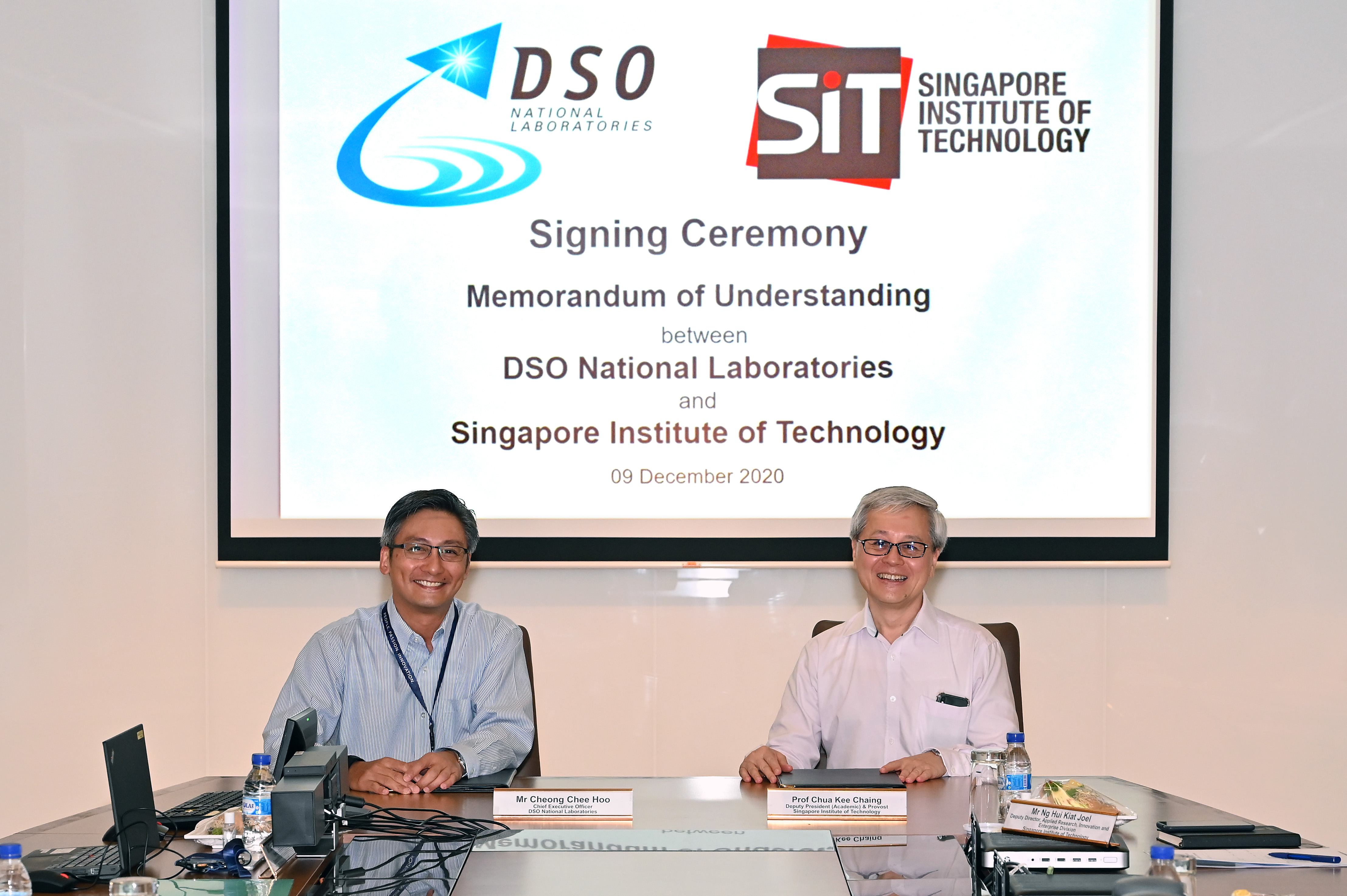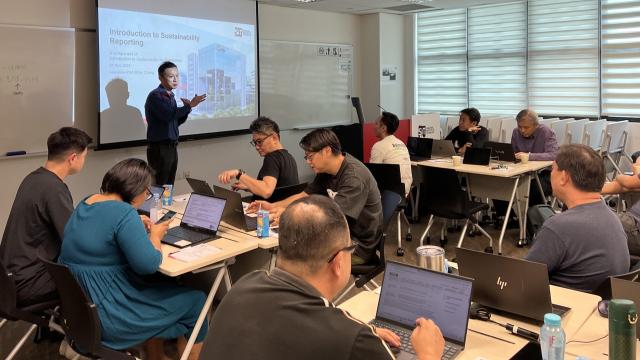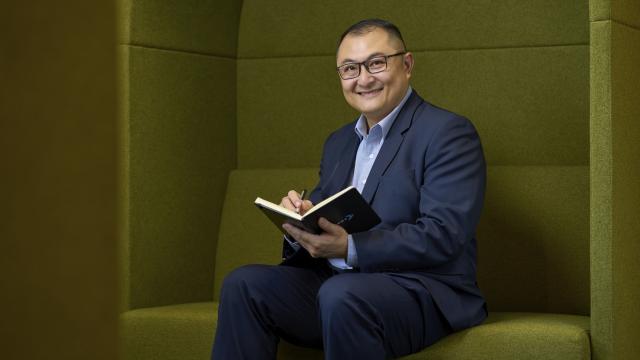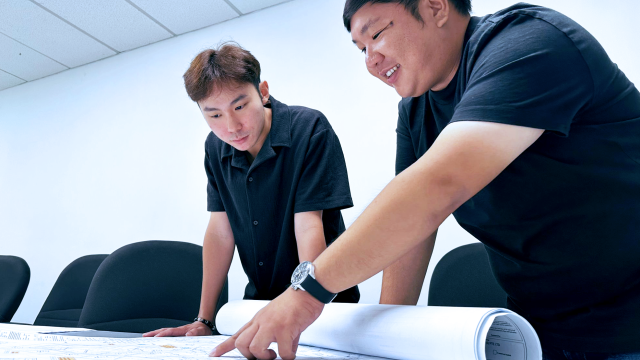The automation era is upon us, where robots are no longer just science fiction but an integral part of our daily lives. As robotic applications move from manufacturing into the service sector, and from factory floors to public spaces, the Singapore Institute of Technology (SIT) is also gearing up its students and the industry for the robotics revolution.
Robots have come a long way from confined roles of performing hazardous tasks in place of humans, to key enablers of advanced manufacturing, to ‘cobots’ – collaborative robots that work with and for humans in people-centric environments.
In Singapore, robotics and automation have been identified as key focus areas for creating new growth opportunities and enabling industry transformation.
In 2017, more than 4,400 industrial robots were installed, an increase of 72 per cent from 2016, according to figures from the Ministry of Trade and Industry Singapore.
Besides industrial robots, the adoption of service and field robots is also on the rise. Singapore’s robotics ecosystem of automation companies, systems integrators and research institutions has been growing steadily to support the design, development and deployment of robotics solutions in various sectors.
A New Programme to Support Career Aspirations in Robotics
As opportunities in robotics continue to bloom, many are eager to pursue a career in the field.
But robotics is a complex, interdisciplinary field that involves much more than building robots. A robotics or automation engineer requires knowledge and skills across diverse areas, including mechanical and mechatronics, electrical and electronics, computers and networking, sensors and digital signal processing, navigation and control, as well as cognitive science and systems engineering.
To prepare students to excel in this field, SIT launched the Bachelor of Engineering in Robotics Systems in January 2021, as part of its suite of specialised degree programmes.
Designed in consultation with key partners such as the National Robotics Programme (NRP) and the Economic Development Board (EDB), the four-year programme focuses on the design and development of service and field robotics systems.
It will cover the deployment of integrative elements including software engineering and artificial intelligence (AI) to link various mechatronics elements together to create a complete robotics system.
Upon graduation, students will be equipped with competencies to solve intricate problems in multiple domains and tackle the evolving demands of Singapore’s service robot industry.
Applied learning is a core component of SIT’s approach to education for all of its programmes, and robotics is no exception. Students in the degree programme will be given opportunities to contextualise theories into real-world industrial applications.
Besides projects, they will also participate in the Integrated Work Study Programme (IWSP), a 12-month work attachment to develop specialist skills in robotics and learn from industry experts.
Driving Applied Research in Robotics
As Singapore’s University of Applied Learning, SIT pursues applied research across its programmes, including robotics systems.
Its work in robotics is closely aligned with NRP, set up by the government to harness robotics technologies and capabilities to address challenges to Singapore’s ageing population and enhance industrial productivity.
SIT’s faculty members actively participate in NRP’s Deep Dive discussion series to investigate applications, technology transition and new initiatives for research and technology development in robotics. This adds to its efforts in partnering with local industries to drive industry innovation and transformation.
A prime example is SIT’s collaboration with local SME, Solustar, to develop and test solutions for autonomous navigation and path planning for their disinfectant robots. Its Engineering, Infocomm Technology and Health and Social Sciences clusters have also worked together to bring about cross-fertilisation of ideas for solutions in assisted healthcare, teleconsultation, as well as robotics and automation solutions.
Joint Laboratory to Collaborate on Robotics

Signatories of the MOU (from left): Mr Cheong Chee Hoo, Chief ExecutiveOfficer, DSO; and Prof Chua Kee Chaing, Deputy President (Academic) &Provost, SIT. (Image credit: DSO)
To spur robotics development, SIT has set up a joint laboratory with strategic partners.
In December 2020, SIT signed a Memorandum of Understanding with the DSO National Laboratories (DSO) to establish the DSO-SIT joint laboratory. It is aimed at developing robotics and cybersecurity projects with an emphasis on dual-use technologies to benefit the commercial sector and the defence community. The laboratory will be sited at SIT@Dover to facilitate collaboration between researchers from DSO and SIT.
The laboratory’s inaugural project is a development of advanced robotics transporter drone technologies. Besides integrating design of key power and propulsion technologies, aerodynamics and control systems, the project will also develop an innovative Virtual Flight Tests approach.
Taking this initiative further, SIT is exploring another project with DSO to design a Digital Twin for experimenting with advanced sensor design and predictive maintenance concepts to enhance the safety of robotics systems.
Moving forward, SIT plans to introduce corporate laboratories for joint work in robotics and emerging technologies in the near future to further boost the capabilities for robotics systems development.
This article was first published in The Singapore Engineer February 2021 issue. Reproduced with permission.



